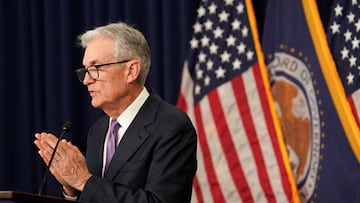Inflation below 3% for first time since 2021: When will the Federal Reserve cut interest rates?
The continuing decrease in inflation has analysts expecting in an interest rate cut before the end of the year after years of high rates.


Inflation in the United States has dropped below 3% for the first time since 2021, with the Consumer Price Index (CPI) rising by 2.9% in the 12 months through July 2024. This marks a significant decrease from the nearly 9% inflation rate recorded in June 2022 and a slight drop from the 3% annual increase reported in June of this year.
The question now is when the Federal Reserve will lower interest rates, which are between 5.25% to 5.5%.
According to a Reuters poll conducted in late May and early June 2024, nearly two-thirds of economists anticipate that the Fed will begin cutting rates in the second half of the year, with the first cut expected in September 2024. Additionally, around 60% of the surveyed economists predict two quarter-point rate cuts before the end of the year, with the second likely in December.
How interest rates are decided
When the Federal Reserve decides on interest rates, it takes into account a variety of economic indicators and factors to ensure that its monetary policy aligns with its dual mandate of promoting maximum employment and maintaining stable prices.
Inflation, particularly measured by the Personal Consumption Expenditures (PCE) price index, remains above the Fed’s 2% target, and it is not expected to reach this target until at least 2026.
BREAKING: Inflation falls below 3% for the first time since 2021. pic.twitter.com/VddVCZ0XpB
— MSNBC (@MSNBC) August 14, 2024
The health of the labor market is the other critical factor. A strong job market with low unemployment may lead the Fed to raise rates to prevent the economy from overheating. However, if unemployment is high, the Fed might lower rates to encourage borrowing and investment, which can create jobs. The most recent job data was not healthy in this regard, and led to a slide in the stock market.
Related stories
Read also:
As Social Security checks and inflation cool, the price of this beloved fruit has skyrocketed 13%

Complete your personal details to comment